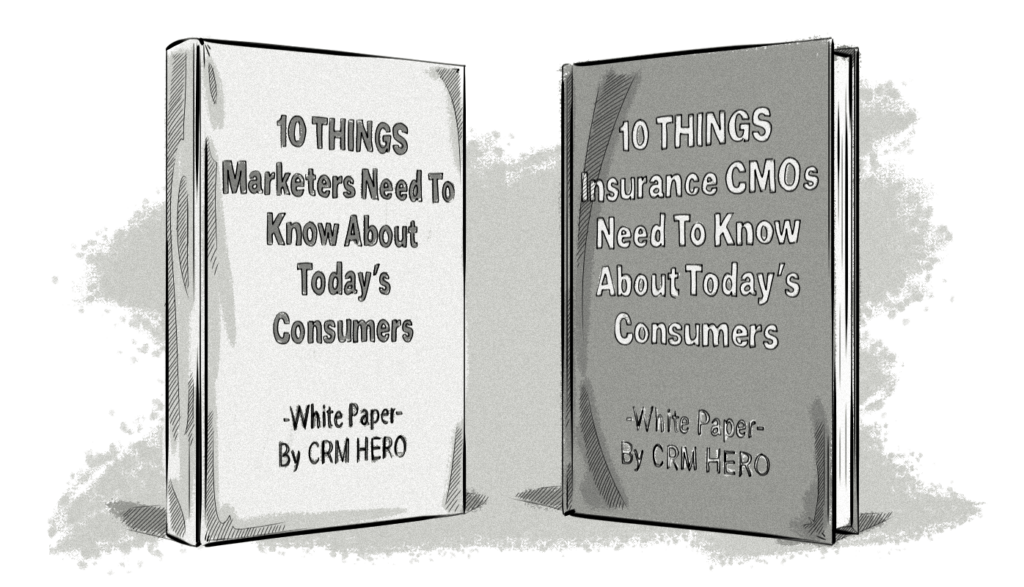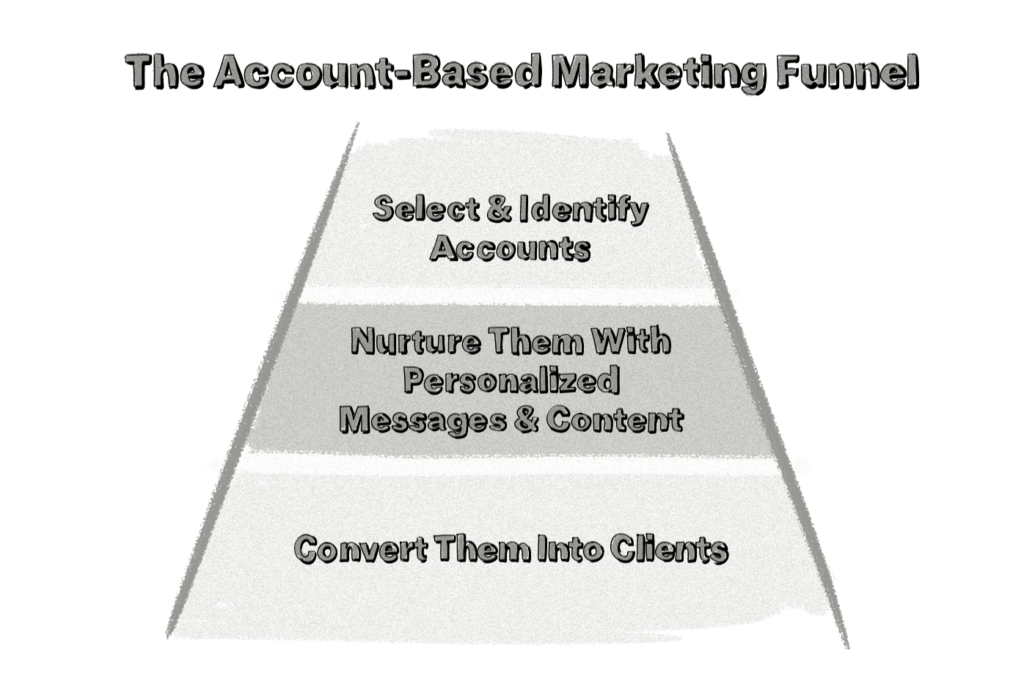Account-based marketing (ABM) has been around for a number of years, some say since the early 2000s, but it’s only in the past five or so years that ABM has really taken off and been applied on a large scale due to the introduction and rise of new technology.
While you’ve probably heard the term account-based marketing many times before, there is often some confusion as to what it is, how it works, and more importantly, if it’s an effective and profitable way of conducting B2B marketing and advertising campaigns.
What Is Account-Based Marketing?
ABM is a business-to-business (B2B) marketing strategy that focuses on identifying accounts (i.e. companies) that match your ideal clients and targeting the key decision makers at those companies with personalized messages and content through your marketing and advertising campaigns.
ABM pulls marketing and sales teams together to focus their efforts on pre-identified accounts, rather than applying traditional targeting methods to campaigns.
Here’s a visual analogy of account-based marketing and how it differs to other forms of targeting.
Marketing is a lot like fishing — your goal is to try and catch the trophy fish (i.e. your best customers) and there is more than one way to go about it.

With the trawling approach, your aim is to catch as many fish as possible and hope you reel in a trophy fish along the way.
In the marketing world, this translates as marketing and advertising to the masses with general messages aimed at a wide audience in the hopes that you attract clients who actually match your ideal customer. This is the type of activity that occurs in business-to-consumer (B2C) marketing.

With the selective approach, you head out to the deeper parts of the ocean with the hopes of catching the big fish. Sometimes you’ll catch a trophy fish, but most of the time you won’t.
In the B2B marketing context, the selective approach involves marketing and advertising to individuals based on a set of characteristics, e.g. their position, the size of the company, etc. Sometimes you’ll attract your ideal client, but it’s very much hit and miss.

The spearfishing approach involves identifying which fish you consider to be trophy fish, and then going out and fishing with the sole purpose of catching them. You are not interested in catching any other type of fish.
This is what account-based marketing is all about. Instead of marketing to the masses and hoping that something sticks, or targeting individuals based on a set of criteria, you identify which companies match your ideal clients and then you market directly to the key decision makers at those companies.
While some may argue that ABM lacks the scale the trawling approach is able to achieve, it’s through the use of technology and automation that’s allowing ABM to scale more than ever.
How Does Account-Based Marketing Work?
Account-based marketing is a strategy that can be divided into three main stages: identification, marketing, and measurement.
Identification
Identifying which accounts (i.e. companies) you want to sell to or gain as clients is the first step. This process is similar to creating a buyer persona, but instead of identifying people based on general characteristics (e.g. age, position, business needs, etc.), you create a list of companies you want to target.
There are a number of ways you can generate this list, but generally it includes the following:
- Previous and existing clients (ones that generate a decent amount of profit for your company)
- Your clients’ (and past clients’) competitors
- Companies that have been regularly visiting your website
Also, in today’s business world, when it comes to choosing new products or services (especially new technologies or software), there is often more than one person involved in the decision-making process.
For example, a marketing manager may be given the task of researching a new piece of marketing software, but his or her CMO, CFO, and even colleagues may also be part of the overall decision-making process.
Therefore, it’s important to identify the key decision makers at these companies and include them in your list as well.
Marketing
Once you’ve identified the accounts (and the key people) you want to target, the next step is to market to them.
This involves creating marketing campaigns and material targeted at your desired accounts that will attract and move them down the funnel. This can include personalizing your website, landing pages, email campaigns, and ebooks or whitepapers.
For example, let’s imagine for a moment that your company, CRM Hero, sells a customer relationship management (CRM) tool and you want to attract a large insurance company. Instead of writing a white paper targeted at marketers, you can create one targeted at key decision makers at insurance companies.

By making the title and content of the white paper more specific, you are increasing the chances of your white paper being read by a key decision maker, which in this case is a CMO at an insurance company.
As mentioned above, it’s important to create different content and market to all possible decision makers, not just the one you think will be responsible for the final decision.
Another critical area of ABM is real-time personalization. By personalizing the content and user experience at every touchpoint, you not only increase engagement, but you are able to better guide your prospect through their decision-making process and buyer’s journey.
Not sure what a prospect is? Read this post: What Is a Prospect? (+How It’s Different From a Lead)
It’s also important to note that account-based marketing isn’t limited to just marketing, it also extends into other areas, including account-based advertising and account-based retargeting, which involve creating display-advertising campaigns containing personalized messages directed at key decision makers at your ideal accounts.
Measurement
Measuring the success of your account-based marketing campaigns requires analyzing different metrics than those you would for traditional advertising and marketing activities.
Metrics such as clicks, impressions, and pages views don’t paint an accurate picture of the true success (or failure) or your ABM initiatives. Instead, you should be looking at the types of companies interacting with your brand on your social accounts, on your website, and even with your sales team.
For example, if you want to attract a certain company that operates in the financial industry, then once you’ve launched your ABM campaigns, you can go back and see if this company has increased its interest in your brand, whether that be an increase in visits to your website or more interactions with various touchpoints (downloading an ebook, clicking on links in emails, etc).
If this particular company’s interest in your company has increased, then your sales team may reach out to them and start a conversation. Alternatively, if you are only seeing a slight increase in engagement, then it may be worth A/B testing different variants of landing pages, content, messages, and even calls-to-action (CTAs) to see whether this brings about any change.
Account-Based Marketing Turns the Funnel Upside Down
In a traditional marketing and sales funnel, visitors and leads are added and then nurtured down the funnel, from being identified as a marketing qualified lead (MQL), then a sales qualified lead (SQL), then as an opportunity, until they eventually become a paying customer or client.
Here’s a look at a traditional marketing and sales funnel:

In an account-based marketing funnel, the whole funnel is basically flipped upside down.
So instead of trying to get as many leads into your funnel as possible, nurturing them, qualifying them, and hopefully turning them into clients, with the ABM funnel you are only adding the accounts you want to the funnel.
Here’s a look at an account-based marketing funnel:

Adopting an account-based marketing strategy only leads to an increase in conversion rates, but it also draws the marketing and sales teams together and allows you to optimize your marketing dollars and your marketing team’s time.
Does Account-Based Marketing Work?
While it may seem that being more selective will negatively impact your company’s bottom line as a result of missed opportunities, many companies are finding success with ABM:
- Over 96% of B2B marketers leveraging ABM report a positive impact on marketing’s success (DEMANDBASE).
- ABM had higher ROI than other marketing activities, according to 97% of marketers in a survey (Alterra Group).
- More than 90 percent of B2B marketers acknowledge account-based marketing as either important or very important (SiriusDecisions).
However, even though ABM is showing some promising signs for a large number of companies, it’s still important that you follow the correct steps, continually test and optimize your campaigns, and more importantly, ensure that your sales and marketing teams are on the same page and share a common goal.








